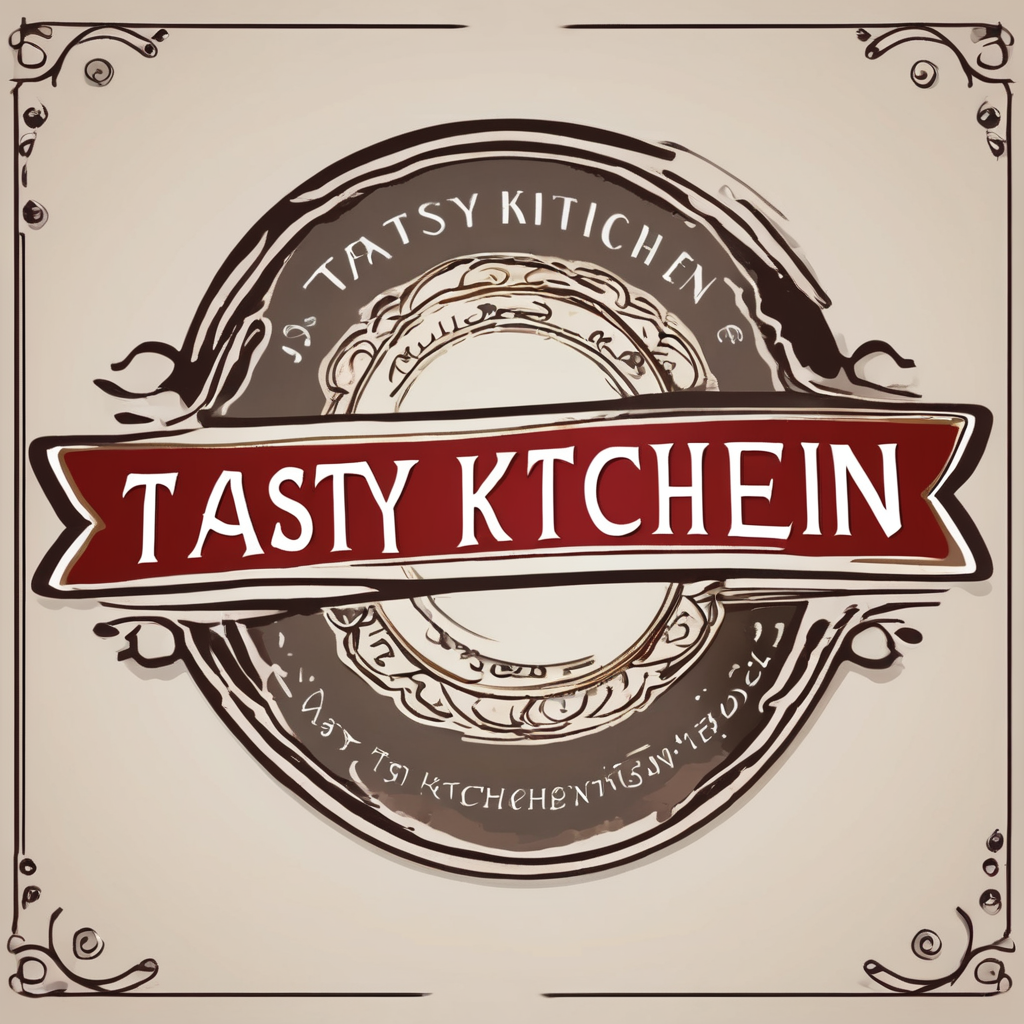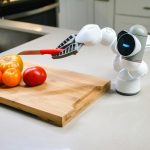Revolutionizing your refrigerator can transform your relationship with food. This guide unveils smart nutrition tracking tools that make maintaining a sustainable, lean diet effortless. Explore innovative methods to understand your eating habits, reduce food waste, and make healthier choices. By leveraging technology, you’ll not only enhance your nutritional awareness but also contribute to a more sustainable lifestyle. Say goodbye to guesswork and hello to informed decisions that benefit both your health and the planet. Unlock the potential of your refrigerator and step confidently towards a healthier future.
Introduction to Smart Nutrition Tracking Tools
In today’s fast-paced world, smart nutrition tracking has become an essential component of maintaining a healthy lifestyle. These innovative tools leverage technology to simplify diet management, helping individuals make informed choices about their food intake. With the rise of nutrition apps and food management tools, tracking what you eat has never been easier or more accessible.
Also to discover : Revolutionize Your Cooking: The Impact of Non-Stick Cookware on Fat Intake at Home
The importance of technology in diet management cannot be overstated. It provides users with real-time data, enabling them to monitor their nutritional intake accurately and make adjustments as needed. This technological advancement empowers users to set and achieve health goals, offering a personalised approach to nutrition that caters to individual needs and preferences.
There are numerous examples of popular nutrition tracking tools available today. Apps like MyFitnessPal, Lose It!, and Cronometer offer comprehensive features that allow users to log meals, track calories, and analyse nutrient intake. These platforms often include barcode scanners, extensive food databases, and personalised recommendations, making them invaluable resources for anyone looking to improve their dietary habits.
Also read : Revolutionize Your Cooking: The Impact of Non-Stick Cookware on Fat Intake at Home
By integrating these tools into daily life, users can gain insights into their eating patterns, identify areas for improvement, and ultimately lead healthier, more balanced lives. The convenience and precision offered by smart nutrition tracking make it an indispensable ally in the journey towards better health.
Organizing the Refrigerator for Sustainability
Adopting sustainable food storage practices is essential for reducing food waste and promoting eco-friendly habits. Proper fridge organization not only helps preserve food quality but also ensures efficient use of space and resources.
Best Practices for Organizing Food in the Fridge
To maximise freshness and reduce food waste, it’s crucial to store items in their optimal locations. Keep fruits and vegetables in designated crisper drawers, which maintain appropriate humidity levels. Dairy products should be placed on the upper shelves, where temperatures are most consistent. Meat and seafood belong on the bottom shelf to prevent contamination from potential drips.
Strategies for Reducing Food Waste
Implementing simple fridge organization tips can significantly decrease waste. Regularly rotate older items to the front, ensuring they’re used before newer purchases. Additionally, keep an inventory of fridge contents, which aids in meal planning and prevents overbuying.
Importance of Labelling and Expiration Dates
Labelling containers with contents and expiration dates is a vital eco-friendly practice. This helps identify items nearing spoilage, encouraging timely consumption. Moreover, it reduces the likelihood of discarding perfectly good food due to uncertainty about its freshness. By adopting these strategies, you contribute to a more sustainable lifestyle while maintaining a well-organized refrigerator.
Meal Planning Strategies for a Lean Diet
Effective meal planning is crucial for maintaining a lean diet, ensuring that your meals are both nutritious and satisfying. To start, dedicate time each week to plan your meals. Begin by assessing your schedule and identifying when you’ll have time for healthy meal prep. This foresight helps prevent last-minute unhealthy choices.
Incorporating seasonal and local ingredients is a key strategy. These ingredients are often fresher, more flavourful, and environmentally friendly. Visit local markets to discover what’s in season and plan meals around these items. This not only supports local farmers but also ensures a diverse intake of nutrients.
Balancing macronutrients is essential for optimal health. Each meal should ideally contain a balance of proteins, carbohydrates, and healthy fats. For example, a meal might include grilled chicken (protein), quinoa (carbohydrates), and avocado (healthy fat). This balance helps maintain energy levels and supports muscle maintenance.
To streamline your meal planning, consider these steps:
- List your favourite meals and identify their core ingredients.
- Rotate these meals weekly, ensuring variety and balanced nutrition.
- Prepare ingredients in advance to save time during the week.
By implementing these strategies, you can create a sustainable and effective diet plan that supports a lean lifestyle.
Essential Food Storage Practices
Proper food storage techniques are vital for extending the shelf life of your groceries and maintaining their nutritional value. Understanding the optimal fridge temperature and how to organise different food types can significantly enhance food preservation.
Guidelines for Storing Different Types of Food
Different foods require specific storage conditions to remain fresh. Dairy products and leftovers should be kept on the middle shelves where temperatures are consistent. Fruits and vegetables thrive in the crisper drawers, which offer the right humidity levels. Raw meats should be stored on the bottom shelf to prevent contamination from potential drips.
Understanding Fridge Zones for Optimal Storage
Your fridge is divided into zones, each with its own temperature and humidity levels. The back of the fridge is typically the coldest, ideal for items like milk and eggs. The door is the warmest part and best for condiments. Knowing these zones helps in strategically placing items for maximum freshness.
Tips for Freezing and Thawing Food Safely
Freezing is an excellent way to preserve food, but it must be done correctly. Ensure food is properly sealed to avoid freezer burn. When thawing, always do so in the fridge or microwave, never at room temperature, to prevent bacterial growth.
Recommended Apps and Devices for Nutrition Tracking
In the realm of nutrition tracking apps, a few stand out for their comprehensive features and user-friendly interfaces. MyFitnessPal is renowned for its extensive food database and barcode scanning capabilities, making logging meals simple. Lose It! offers a personalised experience, allowing users to set specific health goals and track their progress with ease. Cronometer provides detailed nutrient breakdowns, ideal for those focusing on micronutrient intake.
Health monitoring devices complement these apps by offering real-time data on physical activity and caloric expenditure. Devices like Fitbit and Apple Watch sync seamlessly with nutrition apps, providing a holistic view of one’s health. This integration facilitates a more accurate assessment of dietary needs and adjustments.
When selecting technology for diet management, consider apps with features like meal reminders, recipe suggestions, and integration with health monitoring devices. User-friendly interfaces and customisable settings enhance the experience, making it easier to stay on track with nutrition goals. Additionally, look for apps that offer community support or expert advice, as these can provide motivation and guidance.
By leveraging these nutrition tracking apps and devices, users can achieve a balanced and informed approach to their dietary habits, ultimately supporting a healthier lifestyle.
Making Healthier Food Choices Based on Tracking Data
Incorporating data-driven nutrition into your daily routine can significantly enhance your food choices. By analysing tracking data, you can identify patterns in your eating habits, which is crucial for making informed decisions. For instance, if your data reveals frequent consumption of high-calorie snacks, you can consciously replace them with healthier alternatives.
Recognising these patterns enables you to set achievable nutrition goals. For example, if your tracking data indicates a deficiency in certain nutrients, you can adjust your diet to include foods rich in those nutrients. This approach not only supports healthy eating habits but also ensures a balanced intake of essential vitamins and minerals.
To effectively utilise tracking data, consider the following steps:
- Review your data regularly to spot trends in your dietary habits.
- Set specific, measurable goals based on the insights gained, such as increasing fibre intake or reducing sugar consumption.
- Adjust your meal plans accordingly to align with your nutrition objectives.
By leveraging tracking data, you can make more informed food choices, ultimately fostering a healthier lifestyle. This proactive approach empowers you to take control of your nutrition, leading to long-term benefits for your overall well-being.
The Role of Visual Aids in Nutrition Tracking
Visual aids for nutrition, such as infographics, play a crucial role in making food tracking more engaging and effective. These tools transform complex data into easily digestible formats, helping users quickly understand their dietary habits and make informed decisions. By presenting information visually, users can identify patterns and trends that might be overlooked in text-based data.
Effective infographics for meal planning can illustrate portion sizes, nutrient breakdowns, and food group distributions. For instance, a pie chart showing the balance of proteins, carbohydrates, and fats in a meal provides a clear visual cue for maintaining a balanced diet. Similarly, a colourful bar graph can depict daily vitamin and mineral intake, highlighting areas that need attention.
Using visuals to inspire healthier choices is another powerful aspect of these tools. A vibrant infographic showcasing the benefits of incorporating more vegetables into meals can motivate users to adjust their diets. Additionally, visual aids can simplify meal prep by offering step-by-step guides or visual grocery lists, making healthy eating more accessible.
By integrating visual aids into nutrition tracking, individuals can enhance their understanding of dietary data, leading to more informed and healthier food choices. This approach not only simplifies tracking but also encourages consistent and positive changes in eating habits.
Overcoming Common Challenges in Nutrition Tracking
Navigating nutrition tracking challenges can be daunting, but understanding common hurdles and strategies to overcome them is essential for a sustainable dieting journey. One frequent obstacle is the inconsistency in logging meals, often due to busy schedules or forgetting to track. This can be mitigated by setting reminders on your smartphone or using apps with easy logging features, ensuring you stay on track.
Another challenge is maintaining motivation over time. To combat this, set realistic and achievable goals that provide a sense of accomplishment. Celebrate small victories, such as consistently meeting a daily calorie target or incorporating more vegetables into meals. This positive reinforcement can keep you engaged and motivated.
Flexibility in diet tracking is crucial. Life is unpredictable, and rigid tracking can lead to frustration. Allow yourself the freedom to adjust your intake based on social events or unexpected changes in routine. This approach helps maintain a healthy relationship with food and promotes long-term success.
Lastly, overcoming obstacles like plateaus in weight loss or nutrient deficiencies requires patience and adaptability. Regularly review your tracking data to identify areas for improvement and make necessary adjustments to your diet. This proactive mindset fosters resilience and supports sustainable dieting practices.
Community Support and Resources for Sustainable Dieting
Engaging with a nutrition community can significantly enhance your sustainable dieting journey. These communities provide a platform for sharing experiences, challenges, and successes, fostering a sense of belonging and motivation. By participating in support groups, individuals can access diverse perspectives and advice, which can be invaluable in navigating the complexities of sustainable eating.
Online resources for sustainable dieting are abundant and varied. Websites, forums, and social media groups dedicated to nutrition offer a wealth of information and support. These platforms often feature expert advice, recipes, and tips for maintaining a balanced diet. Additionally, they provide a space for individuals to ask questions and receive feedback from others who share similar dietary goals.
Support groups play a crucial role in encouraging members through shared experiences. Hearing stories of others’ triumphs and setbacks can provide inspiration and reassurance, reminding individuals that they are not alone in their journey. These interactions can help maintain motivation and accountability, essential components for long-term success in sustainable dieting.
By leveraging the power of community and online resources, individuals can enhance their understanding of nutrition and sustainable practices, ultimately leading to more informed and healthier food choices.
Future Trends in Smart Nutrition Tracking
The future of nutrition tracking is poised to revolutionise how we approach dieting and food management. As technology advances, we can expect more innovative food solutions that cater to individual needs with greater precision.
Emerging Technologies in Food Tracking
New technologies are reshaping food tracking, with wearable devices and smart kitchen appliances leading the charge. These tools offer real-time data collection and analysis, providing users with insights into their dietary habits. For example, smart scales can measure portion sizes accurately, while wearable devices track nutrient intake seamlessly.
Predictions for the Future of Sustainable Eating
The integration of technology in dieting will likely promote sustainable eating practices. Future tools may include features that suggest eco-friendly food choices or track carbon footprints. This shift could encourage consumers to make environmentally conscious decisions, aligning personal health goals with global sustainability efforts.
The Impact of AI and Machine Learning on Nutrition Tracking
AI and machine learning are set to transform nutrition tracking by offering personalised recommendations based on individual data. These technologies can analyse dietary patterns and predict future health outcomes, helping users make informed choices. As AI evolves, it may provide even more tailored guidance, enhancing the effectiveness of smart nutrition tracking tools.






